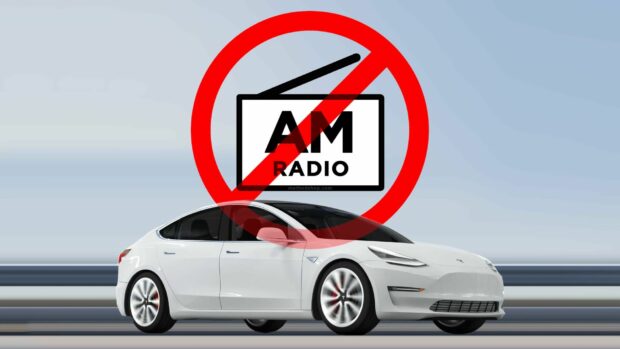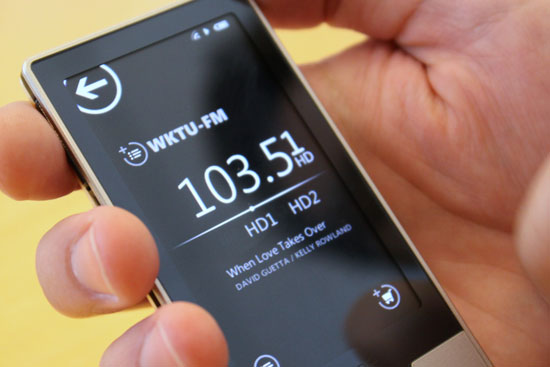The future of AM radio is uncertain. The legacy medium faces a variety of challenges from podcasting to an aging user base. But AM radio’s biggest opponent is the electric vehicle (EV) industry. Because the electromagnetic frequencies of EVs interfere with AM radio signals, automakers would rather just remove AM radio from their vehicles. So what happens to the AM radio industry if new cars no longer have AM radios? Here are some ways for AM radio to survive the electric car revolution.
Why AM Radio Won’t Work In Electric Cars

In an unlucky coincidence, EVs generate electromagnetic frequency (EMF) interference at the same wavelength as AM radio signals. Without proper shielding, AM radio broadcasts can’t be heard inside an EV. It’s a solvable issue, but the automakers aren’t interested. EV carmakers would rather kill AM radio than pay the extra costs involved in properly installing shielded AM radios in their cars.
The only way for AM radio to be a standard option in all new EVs is for the US government to make it a requirement. In an effort to persuade Congress to enact legislation protecting AM radio, organizations like the NAB have thrown their support behind the AM Radio for Every Vehicle Act.
NOTE: Tesla owners who want to listen to AM radio need to pay for a $500 AM radio upgrade. The retrofit works with Model S and Model X vehicles and includes an AM radio antenna and a software update.
Opportunities For AM Radio Stations Beyond Terrestrial Broadcasting
AM is a medium with a long history and a loyal following. If automobile manufacturers stop adding AM radio to new EV models, AM broadcasters can still find ways to be relevant. Here are some audience and revenue growth opportunities for AM broadcasters.
Focus On Streaming Audio Growth
- Make the transition to a digital only stream. Most radio stations are already streaming their broadcasts to digital audiences. Digital streams are usually viewed as less important means of distribution. But what happens when the stream becomes the primary audience feed?
One way for AM radio stations to extend their reach is to stream their broadcast content online. This allows listeners to access the station’s programming on any device with an internet connection, including smart speakers, computers and smartphones.
The physical AM radio may no longer be in the car, but the AM radio fan still is. AM broadcasters will need to aggressively teach their audiences how to listen to the stream using digital devices like the Amazon Alexa at home or using the TuneIn app on their smartphones. Failure to successfully transition the broadcast audience to digital could result in losing them.
Streaming also allows stations to reach a wider audience, as listeners can tune in from anywhere in the world. Instead of just broadcasting about local topics, this is an opportunity for local broadcasters to expand both their audience and revenue opportunities.
Simulcast To FM
- Move To FM, or simulcast on an FM station. Even if EVs no longer have AM radios, they still have an FM radio.
Acquiring an FM radio frequency is easier said than done. This will require AM broadcasters to purchase FM frequencies in their markets, shuffle station signals, or make strategic partnerships with existing stations. Such a project would be both expensive and technically challenging.
But many AM radio stations have proven that an AM/FM simulcast model works. Broadcasting on both AM and FM frequencies will be crucial during the AM radio sunset period. Creating a slow ramp down will give AM listeners enough time to adjust their listening habits.
Start Broadcasting On An FM HD Radio Station

- Broadcast on FM HD. Broadcasting your AM station on an FM HD station is a great way for companies that own both AM and FM radio stations in a market to reach a wider audience.AM.
An FM radio station can have up to 3 HD stations. These are called HD1, HD2, and HD3. HD1 is the main channel, which simulcasts the analog signal. HD2 and HD3 can be used for different programming, such as talk radio, sports, or music. These HD radio stations can offer a new broadcast home for an AM station.
HD Radio is a digital radio technology that offers several advantages over analog radio. HD radio signals are less susceptible to interference from other radio signals and weather conditions. They also offer better sound quality and can provide additional features, such as traffic and weather reports. HD Radio provides superior sound quality, with richer bass, clearer treble, wider stereo separation, and a more expansive dynamic range than both FM and AM broadcasts.
FM radio stations must upgrade their broadcasting equipment and pay a licensing fee to iBiquity to use HD Radio format. While conventional FM radio tuners can pick up traditional analog radio signals, upgraded radio hardware is needed to receive digital HD radio content signals.
HD Radio is currently available in the United States, Canada, Mexico, and the Philippines. It is expected to be available in other countries in the future.
Form Local Media Partnerships

- Partner with other local media brands. Talk to the local media websites, newsletters, TV stations, and newspapers in your market. They may be interested in expanding into audio content.
From newspapers to TV stations, many local media companies have been experimenting with audio products like podcasts. Merging with an AM radio station can be a great chance for a media company to improve their audio production and sales team to make more money from their audio content. With this move, the company can rapidly expand and take advantage of the radio station’s established audience.
This could involve creating podcasts, producing a live audio stream, and publishing written articles. By expanding their reach beyond radio, stations can attract new listeners and generate new revenue streams.
Ideas For The Future Of AM Radio Without AM Radios In Cars
Regardless of how you move or reconfigure your AM radio signal, the content has to be worth the extra effort for the audience. Focusing on the local communities by providing news, weather, and traffic updates, local broadcasters will always be an essential part of their listeners’ lives. Moving listeners to a digital stream of another format, like FM or HD Radio, is a lot of work. Just make sure that the “juice is worth the squeeze” for your audience.
Unfortunately, none of these ideas will be a 1:1 replacement for the audience and revenue opportunities that AM broadcasters traditionally experienced. Having AM radios in every vehicle was an extremely convenient way to reach listeners. However, by implementing some of these tactics, some stations may be able to adapt and survive even after the decline of AM radio in vehicles.
The future of AM radio is uncertain. But with some creative thinking, AM broadcasters can plan the future of AM radio and extend the medium’s lifespan for years to come.
Audience And Revenue Growth Ideas For AM Broadcasters That Doesn't Require Listeners To Own A Physical AM Radio Share on X
Frank Wilson is a retired teacher with over 30 years of combined experience in the education, small business technology, and real estate business. He now blogs as a hobby and spends most days tinkering with old computers. Wilson is passionate about tech, enjoys fishing, and loves drinking beer.














 7 Reasons To Save AM Radio In Cars
7 Reasons To Save AM Radio In Cars
Leave a Reply
You must be logged in to post a comment.